

Infolit charts 2019. Know Your Sources. When doing research you will come across a lot of information from different types of sources. How do you decide which source to use? From tweets to newspaper articles, this tool provides a brief description of each and breaks down 6 factors of what to consider when selecting a source. A platform for millions of very short messages on a variety of topics that enables brief dialogue between distinct groups of people across geographic, political, cultural and economic boundaries. An avenue for sharing both developed and unpolished ideas and interests with a niche community with relative ease. A collection of millions of educational, inspirational, eye-opening and entertaining videos that are shared rapidly and widely. A reporting and recording of cultural and political happenings that keeps the general public informed of daily events, sports, and current news. A book in which the information presented is supported by clearly identified sources.
Total Number Published per Day Time in review. DigiPo4 MovesInfographic. How This Nonprofit Got More Out of Their Annual Report [Infographic] - Kivi's Nonprofit Communications Blog. Here’s yet another great example of how remaking your tired old traditional annual report into something more modern can reap great rewards . . .
![How This Nonprofit Got More Out of Their Annual Report [Infographic] - Kivi's Nonprofit Communications Blog](http://cdn.pearltrees.com/s/pic/th/infographic-communications-199025780)
Paula Watson-Lakamp, Communications Manager at Poudre River Public Library District, shared how they pared down their 32-page (!!) Annual report into an infographic that created more member engagement, especially on social media. When using Bloom’s Digital Taxonomy (a revised take on Bloom’s devised by educator Andrew Churches), it helps to have a list of verbs to know what actions define each stage of the taxonomy. This is useful for lesson planning, rubric making, and any other teacher-oriented task requiring planning and assessment strategies. The Bloom’s Digital Taxonomy verbs in this handy infographic apply specifically to each stage of the taxonomy.
They progress from LOTS (lower-order thinking skills) to the HOTS (higher-order thinking skills). According to Churches on his wiki Edorigami, “Bloom’s Revised Taxonomy describes many traditional classroom practices, behaviours and actions, but does not account for the new processes and actions associated with Web 2.0 technologies …” This means the verbs listed below are applicable to facilitating technology use in the modern classrooms.
When I received the invitation from the new Lee Kong Chian School of Medicine at the Nanyang Technological University in Singapore, I decided to completely upgrade two seminar workshops.
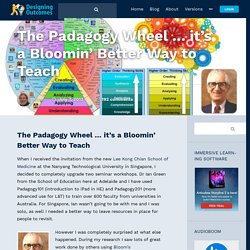
Dr Ian Green from the School of Education here at Adelaide and I have used Padagogy101 (introduction to iPad in HE) and Padagogy201 (more advanced use for L&T) to train over 600 faculty from universities in Australia. For Singapore, Ian wasn’t going to be with me and I was solo, as well I needed a better way to leave resources in place for people to revisit. However I was completely surprised at what else happened. During my research I saw lots of great work done by others using Bloom’s Taxonomy including the Revised Taxonomy which has now become the Bloom’s Digital Taxonomy. However when I discovered the excellent pioneer work done by Kathy Schrock with “Bloomin’ Apps” I got the idea for the Padagogy Wheel.
I have added 62 iPad apps to the wheel and put them where they could serve the pedagogy. AASL: School Librarians Transform Learning. School Librarians as Learning Leaders. MLA8 Infographic. Future Ready Librarians infographic. By Joanna Gerakios Has the saying “future ready” been bounced around in your professional circles recently?
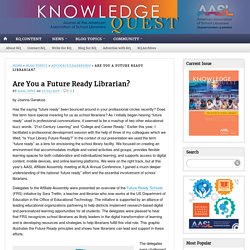
Personalizable Infographic - Impact on Students. Thank you for participating in School Library Snapshot!
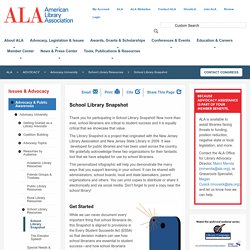
Now more than ever, school librarians are critical to student success and it is equally critical that we showcase that value. The Library Snapshot is a project that originated with the New Jersey Library Association and New Jersey State Library in 2009. It was developed for public libraries and has been used across the country. Fake News. The horror stories of young people not grasping the reach and influence of the content they put online are familiar to all of us.
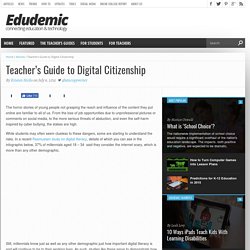
From the loss of job opportunities due to unprofessional pictures or comments on social media, to the more serious threats of abduction, and even the self-harm inspired by cyber bullying, the stakes are high. While students may often seem clueless to these dangers, some are starting to understand the risks. In a recent Rasmussen study on digital literacy, details of which you can see in the infographic below, 37% of millennials aged 18 – 34 said they consider the internet scary, which is more than any other demographic. Librarians Embrace Tech Instruction. How Teens Can Fight Cyber Bullying. About ETR Community EdTechReview (ETR) is a community of and for everyone involved in education technology to connect and collaborate both online and offline to discover, learn, utilize and share about the best ways technology can improve learning, teaching, and leading in the 21st century.
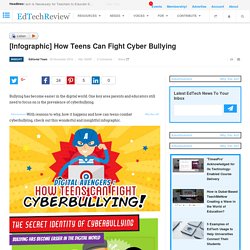
EdTechReview spreads awareness on education technology and its role in 21st century education through best research and practices of using technology in education, and by facilitating events, training, professional development, and consultation in its adoption and implementation. Educational Fair Use - A Flow Chart for Teachers. Copyright. However fabulous Creative Commons and Public Domain content may be, sometimes you really need to use copyrighted material.
Say you plan to comment on popular media or current events. For instance, you may be planning to critique the portrayal of Native Americans in commercial films. Internet Copyright Infringement - 5 Myths vs. Facts. Embed Code For hosted site: Click the code to copy <div class='visually_embed'><img class='visually_embed_infographic' src=' alt='Copyright Infringement: 5 Myths vs Facts' /><div class='visually_embed_cycle'><span>by </span><a target='_blank' href=' <br/></div><script type='text/javascript' src=' class='visually_embed_script' id='visually_embed_script_88270'></script><p> From <a href='
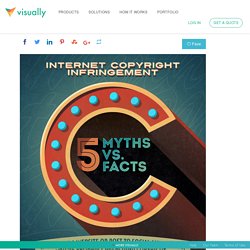
Will All Student Engagement Produce Student Growth? South Carolina School Librarians Make Schools Stronger. Strong School Libraries Build Strong Students. The Power of "I Don't Know" The uTEC Maker Model (Loertscher) 6 Principles of Genius Hour in the Classroom. Book Trailers and the Common Core Standards. --------- Students use technology & digital media strategically and capably.-- Common Core Standards.
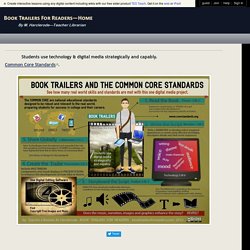
From the Common Core Key Points on Media and Technology: Anatomy of a Librarian. I Am a Future Ready Librarian. Formative Assessment. 10 Assessments You Can Perform in 90 Seconds. 10 Assessments You Can Perform In 90 Seconds by TeachThought Staff Good assessment is frequent assessment.
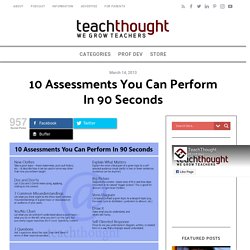
Any assessment is designed to provide a snapshot of student understand—the more snapshots, the more complete the full picture of knowledge. On its best day, an assessment will be 100% effective, telling you exactly what a student understands. More commonly, the return will be significantly lower as the wording of questions, the student’s sense of self-efficacy, or other factors diminish their assessment performance.
This makes a strong argument for frequent assessment, as it can be too easy to over-react and “remediate” students who may be banging against the limits of the assessment’s design rather than their own understanding. It is a huge burden (for both teachers and students) to design, write, complete, grade, and absorb the data into an instructional design sequence on a consistent basis. Simple Assessments The word “simple” here is misleading. Digital Differentiation. This is part of a Digital Differentiation model, my way i of weaving a web of flexible tools together for teaching and learning.
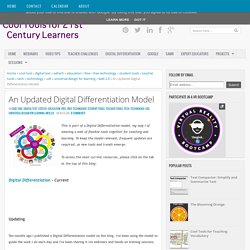
To keep the model relevant, frequent updates are required, as new tools and trends emerge. To access the most current resources, please click on the tab at the top of this blog: Digital Differentiation - Current Updating. Differentiation Is... So, how would you define differentiated instruction? In her newly revised book, The Differentiated Classroom: Responding to the Needs of All Learners, 2nd Edition, Carol Ann Tomlinson discusses the meaning of differentiation and how teachers can modify their instruction to engage all students. The book highlights key principles of differentiation, including: 101 Ways to Show What You Know. Collaborative Strategies - Some Ideas to Try!
Know Your Information Sources. A Reader's Manifesto. Fake News. How to Spot Fake News. The problem of fake news came to a dizzying head in 2016 when a man fired a shot in a family pizzeria as he “self-investigated” a false report of a child abuse ring led by top democrats. A BuzzFeed report confirmed that fake news stories, such as the one that claimed Hillary Clinton sold arms to ISIS, were actually viewed more times than articles from established and legitimate news sources. Did fake news have an impact on the election? How do we address the problem from here? This lesson plan features a Channel One News report on the problem. How to Spot Fake News. Many Roles of the School Librarian (mine)